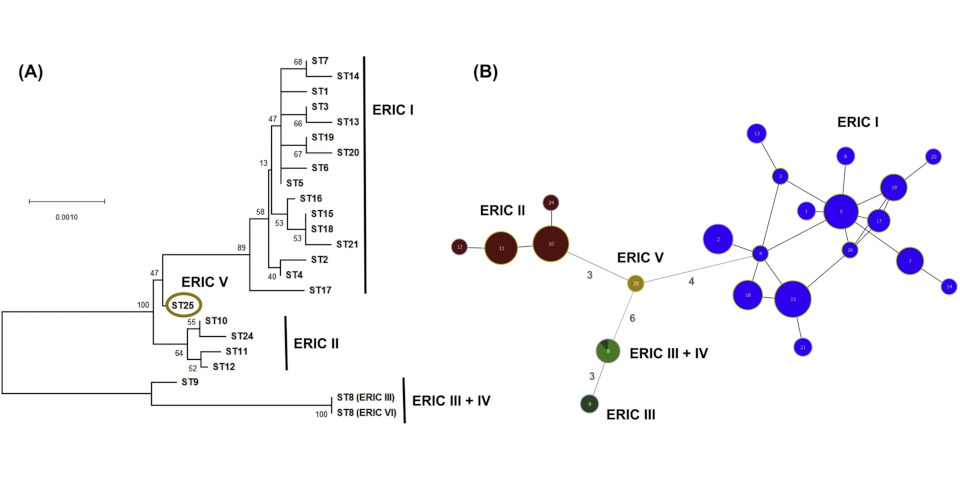Abstract
Paenibacillus larvae is the etiological agent of American Foulbrood (AFB), a highly contagious brood disease of honey bees (Apis mellifera). AFB requires mandatory reporting to the veterinary authority in many countries and until now four genotypes, P. larvae ERIC I-IV, have been identified. We isolated a new genotype, ERIC V, from a Spanish honey sample. After a detailed phenotypic comparison with the reference strains of the ERIC I-IV genotypes, including spore morphology, non-ribosomal peptide (NRP) profiling, and in vivo infections of A. mellifera larvae, we established a genomic DNA Macrorestriction Fragment Pattern Analysis (MRFPA) scheme for future epidemiologic discrimination. Whole genome comparison of the reference strains and the new ERIC V genotype (DSM 106052) revealed that the respective virulence gene inventories of the five genotypes corresponded with the time needed to kill 100 % of the infected bee larvae (LT100) in in vivo infection assays. The rarely isolated P. larvae genotypes ERIC II I-V with a fast-killing phenotype (LT100 3 days) harbor genes with high homology to virulence factors of other insect pathogens. These virulence genes are absent in the epidemiologically prevalent genotypes ERIC I (LT100 12 days) and ERIC II (LT100 7 days), which exhibit slower killing phenotypes. Since killing-retardation is known to reduce the success of hygienic cleaning by nurse bees, the identified absence of virulence factors might explain the epidemiological prevalences of ERIC genotypes. The discovery of the P. larvae ERIC V isolate suggests that more unknown ERIC genotypes exist in bee colonies. Since inactivation or loss of a few genes can transform a fast-killing phenotype into a more dangerous slow-killing phenotype, these rarely isolated genotypes may represent a hidden reservoir for future AFB outbreaks.







